- Quick Summary
- Understanding Alternative Investments
- What are Collectibles?
- Collectible Investing 101
- Comparing Collectibles to Traditional Investments
- Risk of Investing in Collectibles
- Advantages of Investing in Alternative Investments
- Getting Started with Collectibles
- Popular Collectibles and Their Investment Potential
- Should You Invest in Collectibles?
- Conclusion
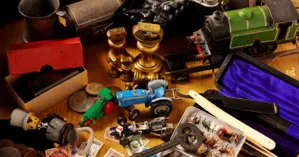
- Quick Summary
- Understanding Alternative Investments
- What are Collectibles?
- Collectible Investing 101
- Comparing Collectibles to Traditional Investments
- Risk of Investing in Collectibles
- Advantages of Investing in Alternative Investments
- Getting Started with Collectibles
- Popular Collectibles and Their Investment Potential
- Should You Invest in Collectibles?
- Conclusion
Most of us have heard of the 1962 The Amazing Spiderman comic from Stan Lee. It was sold for $1.1 million in 2011. The dream of having a collectible go even close to that amount can be overwhelming and make us want to invest in the collectibles market. But there’s a downside to collectibles. Is investing in collectibles worth the risk?
Understanding Alternative Investments
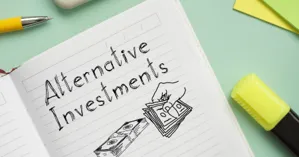
Alternative investments are a class of assets that don’t fit into the traditional categories of stocks, bonds, or cash. They can include real estate, commodities, private equity, and, of course, collectibles. These investments offer a way to diversify your portfolio, potentially increasing returns and reducing risk. However, alternative investments come with their own set of unique challenges. They often require a higher level of expertise and can be less liquid than traditional investments. This means you might not be able to sell them quickly if you need cash. Additionally, the value of alternative investments can be more volatile, influenced by market trends and other external factors. Despite these challenges, many investors find alternative investments appealing for their potential to provide high returns and their ability to add variety to an investment portfolio.
What are Collectibles?
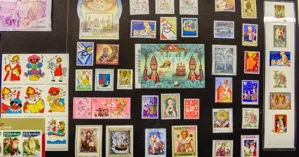
Collectibles are items that are worth more than they were originally sold for. They can be:
- art
- stamps
- books
- toys
- comic books
Among these, certain valuable collectibles such as rare artworks, vintage cars, and historical memorabilia can fetch high prices due to their rarity and condition.
Some collectibles are one of a kind, while others are mass-produced and become collectibles. For example, Beanie Babies were mass-produced, and many are considered collectible.
Some characteristics determine a collectible:
- commercial value – how much it costs
- social value – how it speaks to an audience
- intrinsic value – is it unique and irreplaceable
Collectibles have different values for different people. A baseball card will have a different value to a sports collector than a plate will have to a glass collector.
Nostalgia also plays a role in value. The cycle for popularity tends to run in 20-to-30-year waves. In other words, something popular may become popular again every two to three decades.
Collectible Investing 101

Collectible investing involves purchasing and holding items that are expected to appreciate in value over time. This can range from art and antiques to rare coins and comic books. While it can be a fun and rewarding hobby, successful collectible investing requires thorough research and a keen understanding of the market. Before making a purchase, it’s crucial to assess the market demand for the item, its rarity, and its condition. For instance, a rare coin in mint condition will likely be more valuable than one that is worn. Understanding these factors can help you make informed decisions and increase your chances of seeing a return on your investment. Remember, the collectible market can be unpredictable, so it’s essential to stay informed and be prepared for fluctuations in value.
Comparing Collectibles to Traditional Investments
When comparing collectibles to traditional investments like stocks and bonds, several key differences stand out. Unlike traditional investments, collectibles are typically illiquid, meaning they can’t be easily sold for cash. This can make it challenging to quickly convert your investment into money if needed. Additionally, the value of collectibles tends to be more volatile, with prices fluctuating based on market trends and demand. However, collectibles offer a unique sense of ownership and enjoyment that traditional investments can’t match. Holding a rare comic book or a vintage car can provide a tangible connection to history and culture, adding a personal dimension to your investment. While traditional investments like mutual funds and stocks offer more stability and liquidity, collectibles can bring a unique blend of financial potential and personal satisfaction.
Risk of Investing in Collectibles
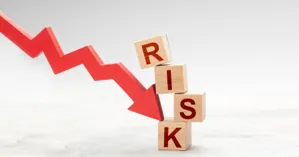
Not everyone can spend a few dollars at a garage sale and end up with an item worth a fortune. And you probably won’t come across something in grandma’s attic. These are myths that feed on the gullible.
Even if you do find an item with potential, you may have to hold it for years before it appreciates. When you make it a point to invest in collectibles, you take several risks. Additionally, understanding the tax implications set forth by the Internal Revenue Service (IRS) is crucial when selling collectibles.
It Costs to Store and Insure Valuable Collectibles
If you collect Hummel figurines, you'll probably have to hold them for a long time to see their value increase. Where will you keep them?
They must be kept safe. Any blemish or ding can diminish a collectible’s value. Something worth $1,000 could plunge to nothing if it gets banged up. You also risk having them destroyed in a fire or flood. That means they’ll need to be insured.
But you'll need to determine their worth. You can't project their worth and insure it for that projection.
That means agreeing to a fair price with your insurance carrier. The cost of insuring them should be about one to two percent of their current value.
The issuer will write you a separate policy to cover your items.
Tax Obligations with Resell
When you sell that collectible, you must pay taxes on your profit as regulated by the Internal Revenue Service (IRS). The IRS isn’t a fan of buying and selling collectibles. If it has appreciated in value, you may have a hefty tax bill.
If you sell the item within a year of purchasing it, you’ll be taxed like its your ordinary income. But if you’ve held the piece for over a year and ultimately sell it, you’ll be subject to a maximum long-term capital gains tax of 28 percent.
You are taxed based on the profit; you are allowed to deduct:
- auction fees
- the price you paid for the item
- restoration or refurbishing costs
In contrast to the collectible capital gains tax, the capital gains tax on stocks and bonds is 15 percent.
Fraud Runs Rampant with Collectibles
Unless you’re an expert it’s risky to invest in collectibles. It’s an unregulated industry. Therefore, it’s full of:
- fakes
- forgeries
- frauds
Even if you are an expert, you can be fooled by a well-manufactured knock-off.
Unfortunately, the market is rife with fraud. This is especially true in sports memorabilia.
The more sought after (like sports) the more counterfeiting there is.
Finding Collectibles at Reasonable Costs in the Collectibles Market Challenging
There’s usually a significant initial investment with collectibles. Finding and purchasing legitimate collectibles can be challenging and expensive.
If you have direct ownership, there's the storage we mentioned earlier.
You can acquire collectibles through investing in specialist funds. This saves you from directly holding the item. But these funds charge management fees. They also don't offer protections that mainstream regulated funds, like stocks and bonds, do.
Illiquidity, Volatility and Subjectivity
Collectibles are not like the stock market. There isn’t continuous trading with collectibles. When times are good, you’ll see many buyers go into collecting. But as soon as the economy goes south, their collectibles are quickly sold.
While valuable collectibles can offer significant returns, their illiquidity and market volatility pose substantial risks.
Collectibles don’t historically act like stocks and bonds, but they do act like risky assets at market extremes. There can be significant transaction costs and losses.
They also have an illiquidity problem. Unlike other investments, you can’t just cash out of collectibles. Stocks you can sell, but a collectible is not that easy. Even if its value has increased, you may still be unable to find a buyer.
Unlike stocks, which can earn ongoing dividends and provide an income stream, your collectible doesn’t earn anything while you keep it.
Finally, the value of a collectible is highly subjective, and therefore, so is its worth. You depend on others’ opinions to determine whether the item is worth anything.
Advantages of Investing in Alternative Investments
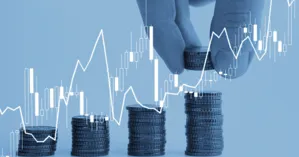
There are many risks to investing in collectibles, but there are some positives as well. For one, having collectibles as part of your portfolio could give you some diversification.
Collectibles also offer the potential for high returns. For example, vintage cars or rare paintings can bring high prices at auctions. Valuable collectibles such as rare paintings and vintage cars can bring high prices at auctions, making them attractive investment options.
Many people like the idea of investing in a tangible asset. You can’t touch a stock but you can hold a figurine in your hand.
And finally, there’s the enjoyment of investing in collectibles. If you really enjoy sports or history, you might want to collect items associated with them. Collecting for the sheer joy is an investment in your happiness.
Getting Started with Collectibles

Starting your journey into collectible investments requires careful research and planning. First, it’s essential to understand the market demand and prices for the type of collectible you’re interested in. Whether it’s vintage cars, rare coins, or comic books, knowing what drives the market can help you make informed decisions. Consider the condition, rarity, and provenance of an item before making a purchase, as these factors significantly impact its value. Setting a budget is also crucial, as collectibles can be expensive, and it’s easy to get carried away. Stick to your budget to avoid financial strain. Additionally, building a network of reputable dealers and experts can provide valuable insights and help you navigate the collectible market more effectively.
Popular Collectibles and Their Investment Potential
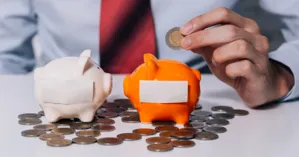
Certain collectibles have shown significant investment potential over the years. Popular items include art, rare coins, comic books, and vintage cars. For example, Star Wars collectibles have seen substantial increases in value, driven by their historical significance and dedicated fan base. Vintage cars, especially those with a storied history or limited production, can fetch high prices at auctions. Comic books, particularly first editions or those featuring iconic characters, are another area where collectors have seen impressive returns. However, it’s essential to do thorough research and understand the market demand before investing. Each type of collectible has its own nuances, and being well-informed can help you make smarter investment choices.
Should You Invest in Collectibles?
Collectibles are risky and speculative and investing in them isn’t for everyone. You’ll need to research and have expertise in the item you’re interested in collecting. It’s essential to work with reputable dealers. Understanding the dynamics of the collectibles market is essential for making informed investment decisions.
If collectibles are going to be part of your investment portfolio, consult with your financial advisor to see what percentage of assets should be collectibles. Consulting with a financial advisor can also help you navigate the tax implications set forth by the Internal Revenue Service (IRS).
Remember, if the collectible is damaged or lost, you’re out of money, unlike a stock.
Conclusion
Collecting as a hobby is fine, collecting as an investment is risky. If you do invest in collectibles, never spend more than you can afford to lose. And plan on keeping the collectible for a long time.



